This post may contain affiliate ads at no cost to you. See my disclosures for more information.
It’s no secret that I love dot markers. In fact, I love them so much that I’ve created over 500 pages of do-a-dot printables that kids can use to play and learn with dot markers.
What are dot markers? Dot markers, also referred to as daubers, are thick markers that can be used to make colorful dots on paper. They can also be used in the more traditional way to draw lines.
Because dot markers are so thick, they are perfect for toddlers and kids who have not yet developed the fine motor control to hold a regular marker in their hand. With dot markers, even very young children can experience the magic of creating and learning with markers. But dot markers are certainly useful for older kids as well.
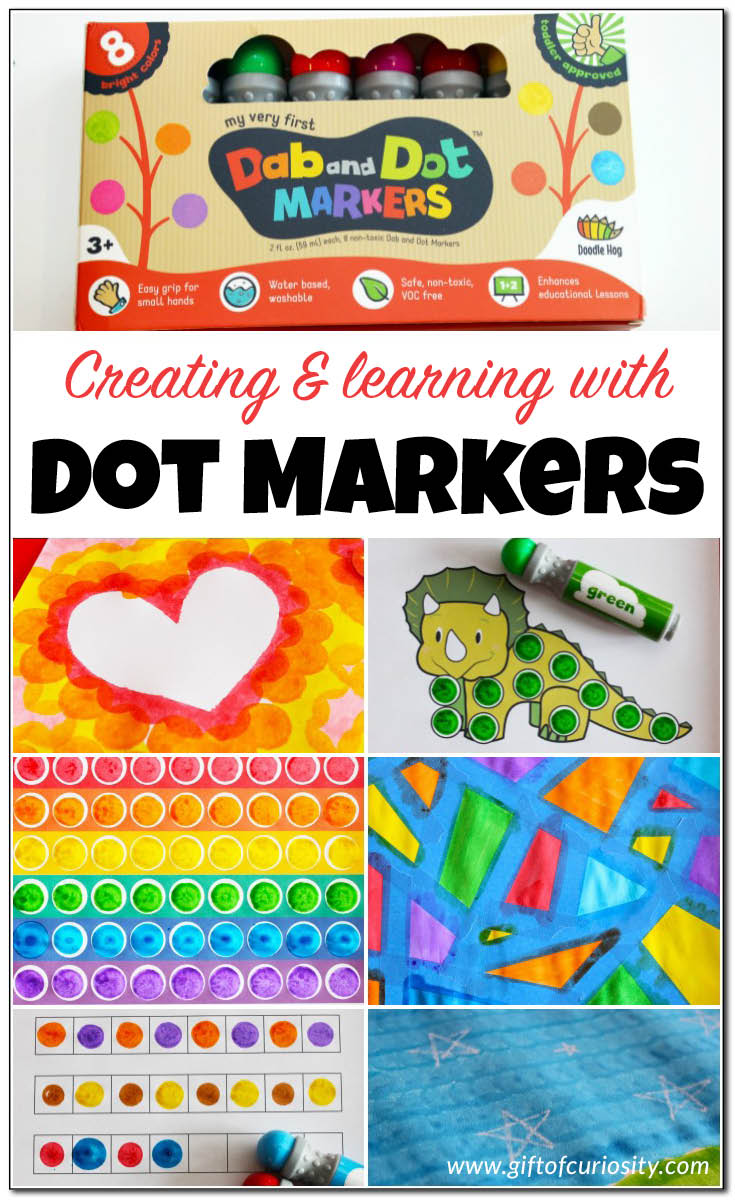
Disclaimer: I received a free box of Dab and Dot Markers in exchange for writing this post. I was not required to write a positive review, and all opinions and ideas expressed herein are my own.
Review of Dab and Dot Markers
We have owned dot markers for a very long time. A few of our markers were getting dry though, so when I was given the opportunity to review Dab and Dot Markers I jumped at the opportunity.
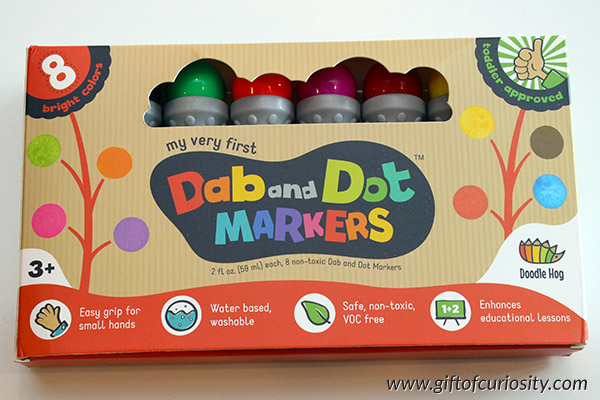
Unlike other brands of dot markers I’ve purchased that only have six colors in the box, Dab and Dot Markers comes with eight different colors: red, orange, yellow, green, blue, purple, pink, and brown.
Dab and Dot Markers are also significantly less expensive than the markers I had previously purchased. However, do not think that lower cost equals lower quality. I found Dab and Dot Markers to be similar in quality to the markers I was used to. If anything, I found it was slightly easier to get the ink to flow initially, and the ink came through the sponge tip at a nice pace without being too try or excessively leaking. I also liked the contoured end which allows kids who are ready to hold the markers using a pencil grip.
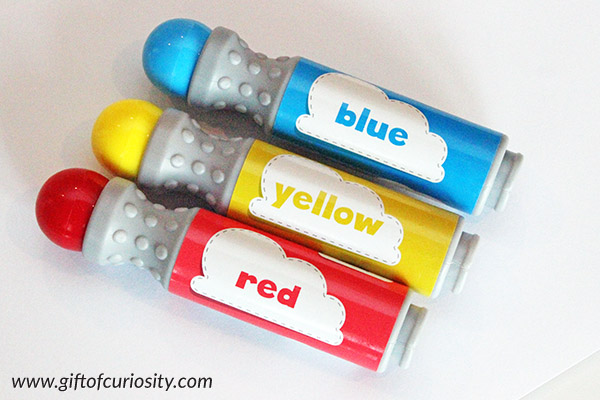
Creating artwork with dot markers
Kids of all ages can use dot markers to create beautiful artwork. Even if dot markers were designed with toddlers in mind, these chunky markers make a wonderful addition to any child’s art supply, no matter their age.
Use dot markers to create negative space paintings
One way to use dot markers is to cut one shape out of paper and tape it onto another sheet of paper. Use dot markers to paint all around the shape.
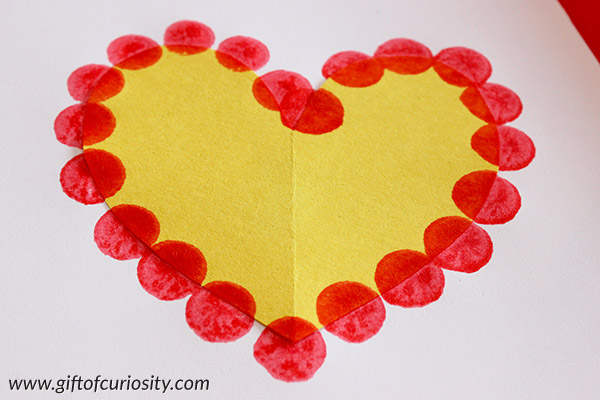
When you are done painting the paper, remove the shape and see the beautiful negative space image left behind, surrounded by dot paint.
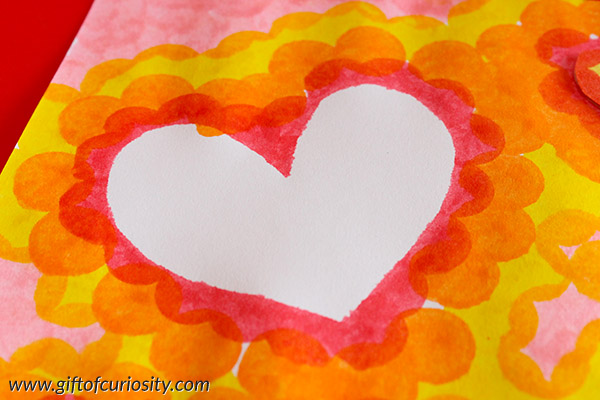
Use dot markers for crayon resist painting
Crayon resist is a technique in which you first draw with white crayon on white paper. The crayon cannot initially be seen. However, it becomes visible once paint is applied on top, because the paint will only color the paper but will not color where the crayon is.
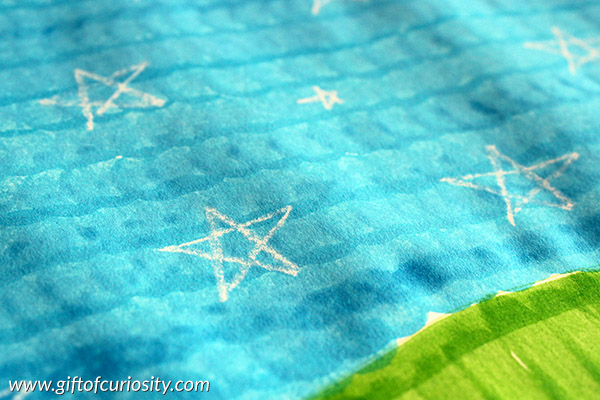
Use dot markers to make tape resist paintings
Tape resist artwork is similar to crayon resist painting, but in this case the paint is resisted by tape rather than crayon. Use painter’s tape to create lines on your paper. Then use dot markers to paint the spaces between the tape.

When you remove the tape, you will reveal white lines between the bright blocks of color.
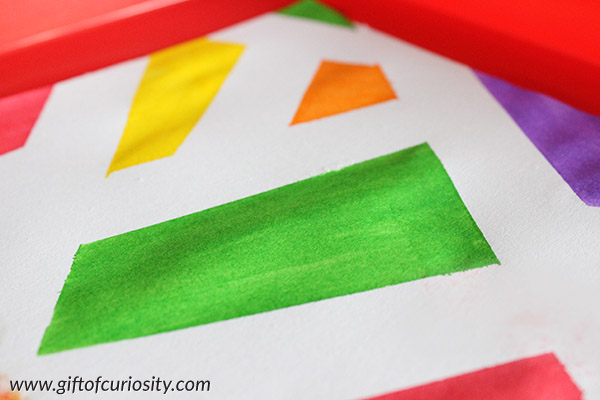
Using dot markers to teach colors
Dot markers are designed with toddlers in mind. And they are a great way for toddlers to experience playing with colors. However, dot markers can also be used to teach more advanced concepts that preschoolers and early elementary students will enjoy.
Use dot markers to learn color names
Children can learn colors simply by having the adults who care for them point out colors and name them. For example, when your child uses the green marker you can say, “I see you made a green dot on your paper. What other colors would you like to make?”
Some kids may prefer a more structured color activity. You may want to print out my Rainbow Do-a-Dot Worksheet and invite your child to fill in the circles with colors that match each part of the rainbow.
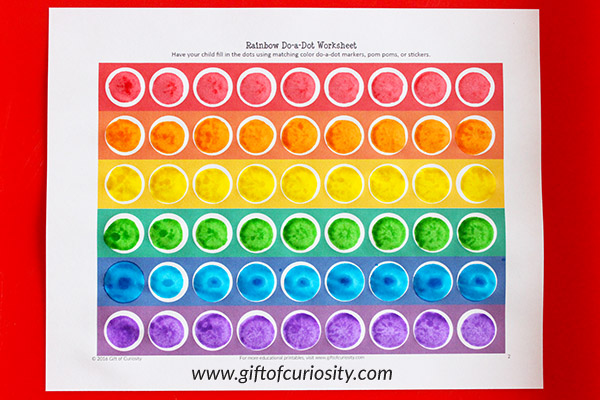
Use dot markers to teach color theory
The liquid form of the dot marker ink makes it easy to overlap colors. This makes dot markers an excellent tool for introducing color theory. Color theory involves understanding how to mix colors to make new colors. In color theory, magenta, yellow, and cyan are considered primary colors because they can be mixed together to form all the other colors.
One way to work on color theory is to give your kids just the red, yellow, and blue markers (which correspond to the three primary colors of magenta, yellow, and cyan).
I experimented by making a red dot, and red/yellow dot, and a yellow dot in the top row of the image below. Kids will clearly see that combining red and yellow makes orange.
I then repeated the process for the other two color combinations: yellow and blue (which make green) and blue and red (which make purple).
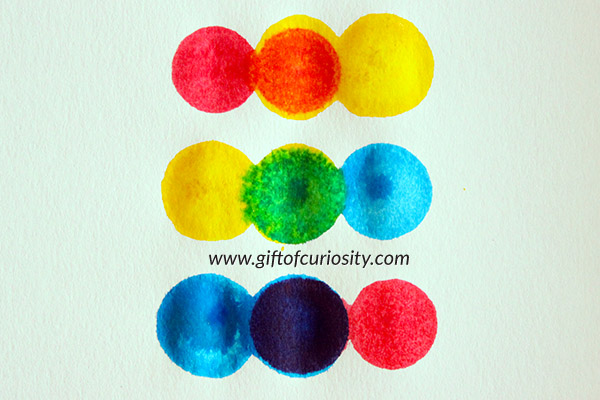
In the image below I played with color blends by mixing red with every other color in the box.
Kids love the opportunity to explore and experiment with colors in this fashion.

Using dot markers to teach one-to-one correspondence
One-to-one correspondence is a foundational math skill that kids typically develop during the toddler and preschool years. One-to-one correspondence is the notion that one object is matched to just one other object. For example, when a child is counting a set of three apples, the child should recognize that each apple gets counted only once (one number is matched to one apple).
Do a dot worksheets are a great way to help kids develop their understanding of one-to-one correspondence. The most basic worksheets, like the one below from my Dinosaur Do-a-Dot Pack, feature a picture with circles that kids can fill in using dot markers. These worksheets encourage kids to make one dot in each circle on the picture.
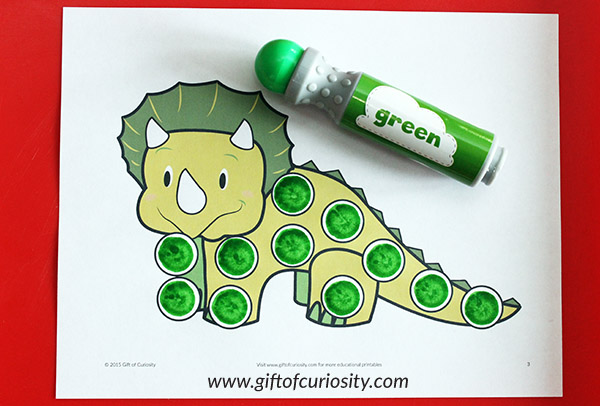
More advanced worksheets, like this one from my Astronaut Do-a-Dot Pack, link numbers to children’s developing understanding of one-to-one correspondence.
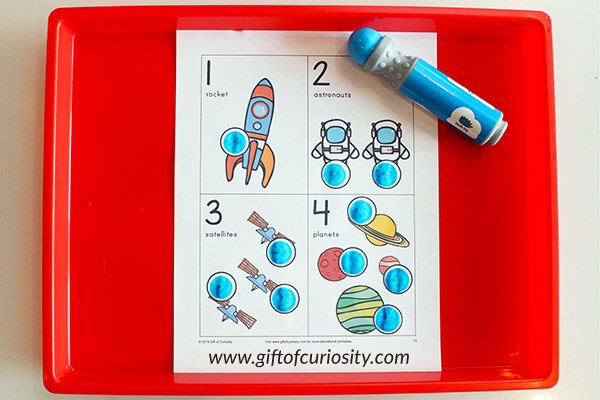
For more resources, please check out my entire collection of do-a-dot printables featuring more than 500 pages of fun do-a-dot worksheets for kids.
Using dot markers to teach patterns
Dot markers are a fantastic and easy way to teach patterns to kids. Pair dot markers with my Patterning Practice worksheets and show your child how to create simple patterns with colors.
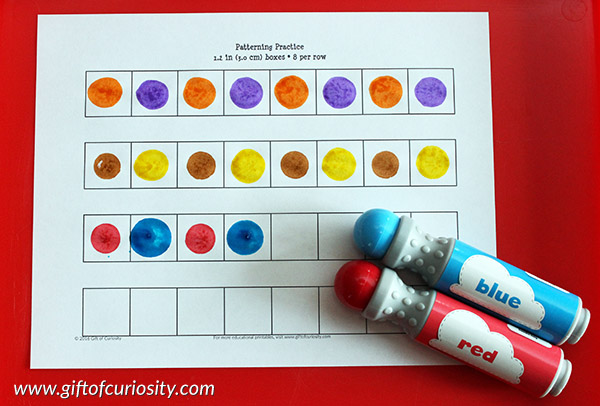
Using dot markers to practice basic addition
Dot markers make it fun and simple for kids to practice basic addition. You can provide the addends (represented below by the red and blue dots) and have your child use markers to complete the sum (represented below by the purple dots), or have your child use markers to create their own math problems.
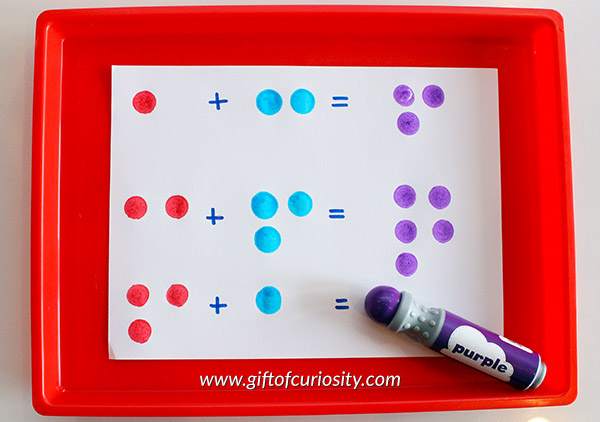
Using dot markers to teach letters
Dot markers can also be a great tool to teach letters. Pair a marker with a dot letter worksheet for your child to become familiar with the formation of various letters, as shown with the F is for Farm do-a-dot worksheet below. (Printable is from my Farm Do-a-Dot Pack.)
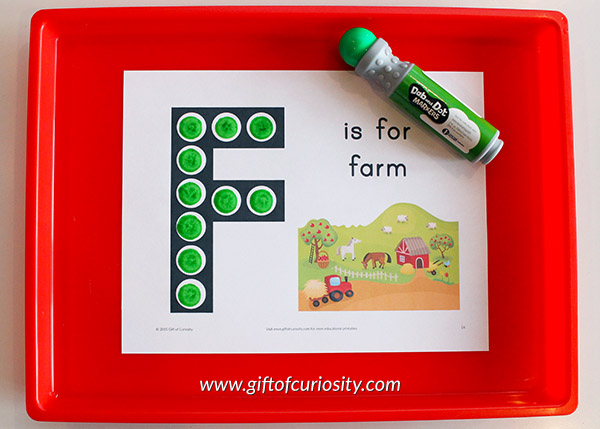
If your child is ready for a bigger challenge, give them a dot marker letter hunt. You can make one yourself simply by writing a variety of letters on a piece of paper. Or you can use one of mine, including this apple themed worksheet for learning the lowercase ‘a’ from my Apple Printables Pack.
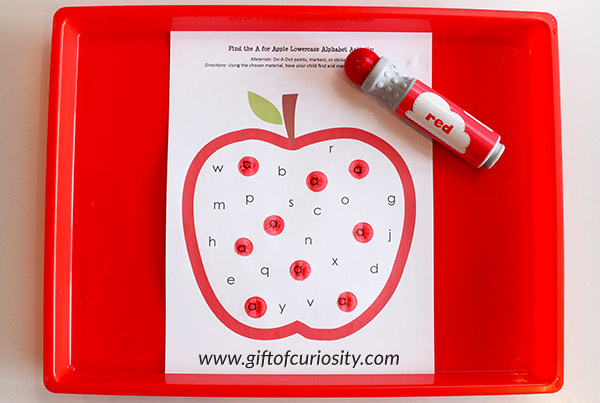
So are you inspired yet with all these ideas for creating and learning with dot markers? 🙂
Grab a set of Dab and Dot Markers from Amazon to get your little ones creating and learning with dot markers.
Want more dot marker ideas?
- Check out my entire collection of do-a-dot printables
- Check out my post featuring 15+ ways to use do-a-dot worksheets for learning

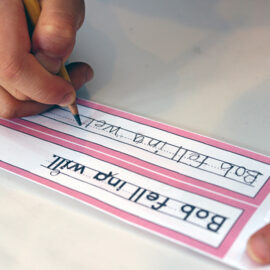
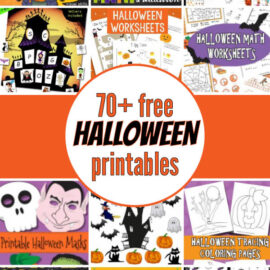

I pinned this and can’t wait to do some of these activities! Love these ideas and I was in need of fresh and fun. Thank you!